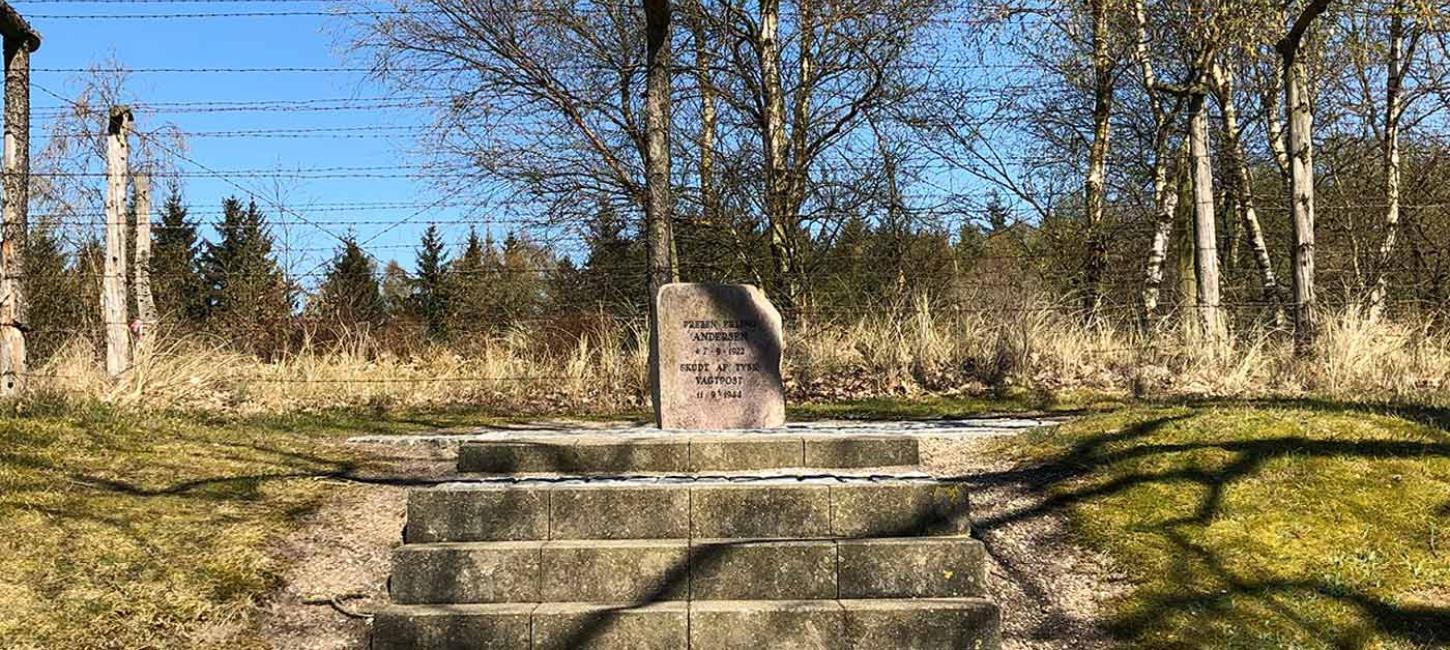
Preben Erling Andersen, prisoner at Frøslev Prison Camp
At Frøslev Prison Camp, “Preben’s Stone” is a well-known term. The stone, which is located next to the barbed wire fence at the perimeter of the camp between watchtowers 3 and 4, is a memorial to prisoner Preben Erling Andersen.
Just four days after his 22nd birthday, Preben was shot by a German guard at the exact spot where the memorial stone now stands.
The shots were fired at around 7.20 p.m. on 11 September 1944 from watchtower no. 3. Preben Andersen fell to the ground, fatally wounded by a shot to the head. After around a quarter of an hour, doctors amongst the prisoners were permitted to come to Preben Andersen’s aid, but he died on the way to the German field hospital in Vojens.
Preben Andersen, who was a bookkeeper by profession and came from Copenhagen, paid a high price for his involvement in the publication of the illegal magazine ‘Hjemmefronten’ (Home Front). He was arrested by the German secret police, Gestapo, in spring 1944.
The fact that Preben was shot can be ascribed to a confluence of several unfortunate circumstances. Firstly, at this time the German SS commandant staff had a particular focus on the camp’s security measures. Mines hadn’t yet been laid around the camp and the barbed wire fence wasn’t electrified, unlike at the majority of German concentration camps.
During the days leading up to the incident, the Germans had therefore made efforts to improve security at the camp by establishing a 4-metre wide security zone running along the inner side of the barbed wire fence aimed at preventing prisoners from getting close to the fence and trying to escape.

Photo:Nationalmuseet
The Germans completed this work on 10 September, and at a subsequent roll-call emphasised to the prisoners that it was now forbidden to enter the newly established security zones. If this exclusion zone was violated, prisoners would be shot on sight.
Whether Preben Andersen, who on the evening of 11 September was going for a walk alongside the security zone, hadn’t heard the warning or didn’t take it seriously, is unknown.
The German commandant staff subsequently investigated the matter and interviewed the guard who reported that he’d shot Preben. However, he stressed that he’d shouted several warnings. The German conclusion concerning the incident was that an escape attempt had been made and that the guard had acted correctly.
Today Preben is buried at Assistens Cemetery in Copenhagen.